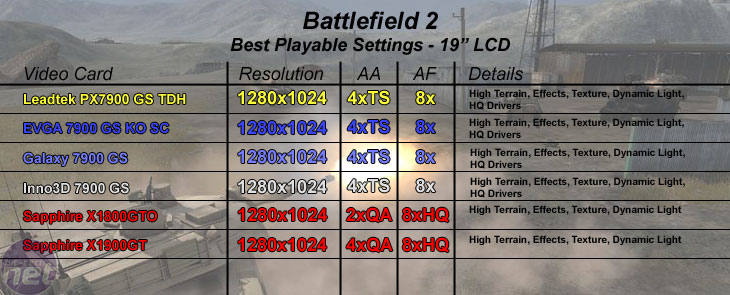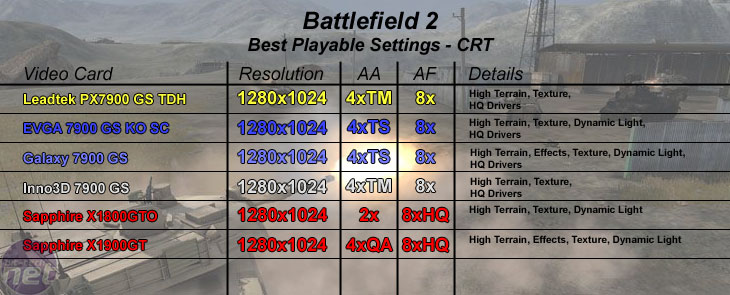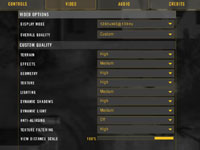Battlefield 2
Publisher: Electronic ArtsBattlefield 2 features an all-new game engine based on the DirectX 9.0 API. There is no Shader Model 3.0 support, but the majority of hardware will use a Shader Model 2.0++ mode that includes support for Normal Maps, Parallax Mapping, Full-Resolution Dynamic Shadowing, Post Processing and Fog.
The game will look the same on both NVIDIA and ATI hardware, so there is no advantage of choosing one over the other in image quality related circumstances. The only major difference is that Ultra Shadow 2 is utilised on NVIDIA's hardware, while the shadowing on ATI hardware is done using a slightly different technique.
We patched the game to version 1.4 and then played three five-minute segments of the 'Strike at Karkand' map, reporting the median frame rate. We found that there was no ready way to duplicate testing situations manually in this game, so we felt that taking a typical slice of action from the game was the best way to report our findings. We controlled anti-aliasing from inside the game, while anisotropic filtering was set to 8xAF when the 'Texture Filtering' option was set to 'High'.


If you're a 17/19" LCD owner, you’re going to get an equal gaming experience from all of the cards tested, except the Radeon X1800GTO.


The Radeon X1900GT was also capable of playing the game with 4x quality adaptive anti-aliasing turned on at the same settings that we found playable on the Galaxy GeForce 7900 GS. Both the Leadtek and Inno3D GeForce 7900 GS cards were capable of playing the game with 4x transparency multisampling anti-aliasing enabled, along with high terrain and texture quality. All other settings were forced to medium – anything higher and we experienced a lot of lag when playing online.

MSI MPG Velox 100R Chassis Review
October 14 2021 | 15:04







Want to comment? Please log in.